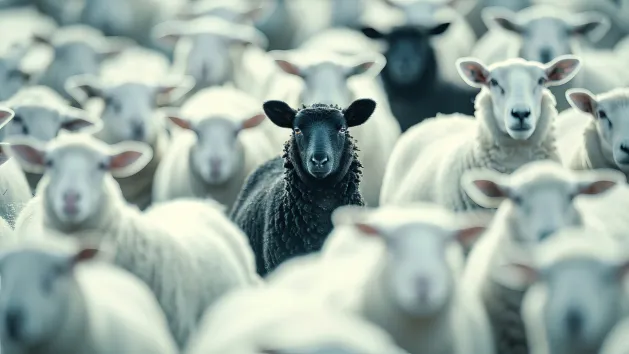
The benefits of meditation for children

The origins of meditation
Meditation has its origins in India, and more specifically in Buddhism and Hinduism. People meditated to better understand their minds and find inner peace. Over time, the practice spread to other Asian countries and took on many different forms. Today, there are no borders when it comes to the practice of meditation: all around the world, people meditate, not just for spiritual reasons, but also because a regular practice helps to maintain a healthy body and mind! 🧘
How to adapt it to children
Meditation exercises are increasingly being offered to children, both at home and in the classroom. When properly age-appropriate, with simple language and clear, meaningful images for children, for example, meditation is a fun activity with many benefits… and lasting ones! 🍃
A rainbow of benefits
Meditation is a tool that suggests children pay attention to their emotions, thoughts and sensations. It is an approach that indirectly promotes metacognition, and therefore learning to learn!
Better concentration
By practicing meditation, children develop their ability to put their Attention on a particular target, for example: what they feel in their body, or what they tell themselves in their head. 🧠 These exercises promote the ability to concentrate, an essential skill for growing and learning in the right conditions.
Managing emotions
By teaching children to be more aware of how they feel, meditation encourages perspective-taking and can help reduce impulsive behavior to make more thoughtful decisions, despite their young age. It’s a bit like having a toolbox to calm the storm when we feel a sharp, unpleasant emotion washing over us.
Deep sleep
The practice of meditation relies on paying particular attention to breathing. And as we know, when we breathe better, we’re immediately more relaxed! All the more reason for a deeper, more restful sleep. 😴
Developing empathy
Listening to and welcoming our own feelings during meditation also develops greater empathy and compassion towards the feelings of others. This can lead to healthier, more harmonious relationships between peers.
Strengthening self-confidence
It promotes self-confidence through a better understanding of one’s own thoughts and feelings. As a result, children develop healthier self-esteem at an earlier age. The practice of meditation helps reduce stress and anxiety. A precious resource to cultivate for a more fulfilling future! 🌈
The different types of meditation
- Guided meditation: uses a narrative framework or vocal instructions to guide the child through an imaginary relaxation or mental journey. The book and CD Calm and attentive like a frog by Eline Snel offers a good introduction to the subject, with talking pictures that are accessible to children.
- Mindfulness meditation: encourages children to focus on the present moment, paying attention to their breathing, body sensations, or surrounding sounds, for example. The Petit Bambou app offers themed meditation programs suitable for children aged 4 and up.
- Breathing meditation : teaches children to focus on and regulate their breathing. One of the best-known tools is cardiac coherence: this involves chaining together cycles of inspiration-expiration for 5 minutes. Apps such as Respirelax, for example, offer free training with auditory and visual support.
- Meditation in motion : incorporates gentle movements, such as yoga or walking, to meditate while moving. The illustrated album Mon premier Livre de Yoga, in french, published by Nathan, features yoga postures inspired by animals, ideal for familiarizing oneself with the practice from age 2.
Adapting meditation sessions to children’s development
From age 3
- Sensitize your child to the different rhythms of breathing, by suggesting that he imitate the rapid breathing of a rabbit, for example, with small inhalations and exhalations through the nose.
- The magic eraser exercise by Nathalie Peretti, can help children refocus on their breathing.
Ages 6 and up
- Ask your child to imagine inflating a large balloon with his or her breath. A deep inhalation to “inflate the balloon”, then a slower exhalation to “deflate it”.
- Before starting a task that will require concentration, offer your child a drink of water.
- Activities such as coloring a mandala can help refocus.
Ages 9 and up
Suggest an imaginary walk. Guide him to imagine the sounds, smells and sensations of the environment.
Guide him through awareness of every part of his body, from feet to head. Encourage him to release any tension in every part of his body.
Babaoo’Tip 💡
Start with short 3-5 minute sessions and use age-appropriate stories or guided visualizations.
Create a pleasant routine
The idea is to gradually integrate it into the daily routine to detect the benefits. Rather than talking about a “perfect practice” of meditation, we create a positive experience that encourages the child to practice regularly. Meditation should not be seen as a “task” for the child, but rather as a natural part of the day. It fits in during quiet times, such as after reading a story or before drawing a picture. 🌞
✏ Note: for younger children, the key is to make meditation fun and engaging. Use props like colorful cushions or soft music to make the practice appealing.
The Babaoo recap’
Incorporating meditation into a routine gives children tools for life: it helps them grow up in harmony with their environment and cultivate a healthy mind to prepare for a serene future.
You may also be interested in these articles



